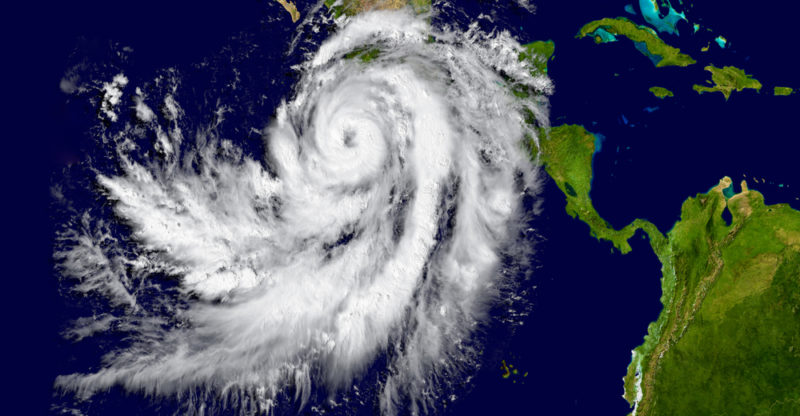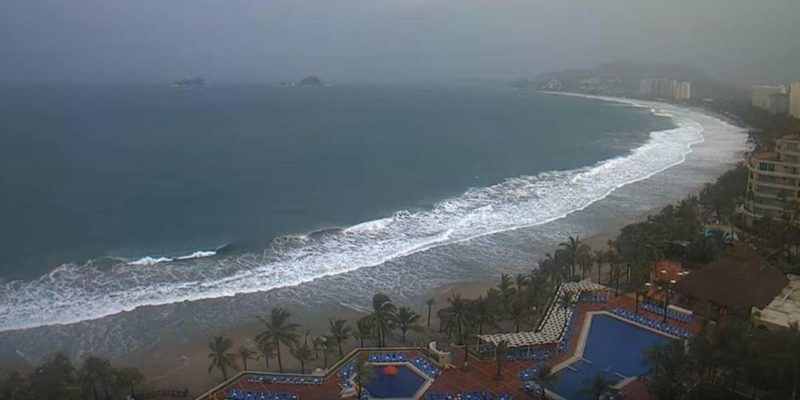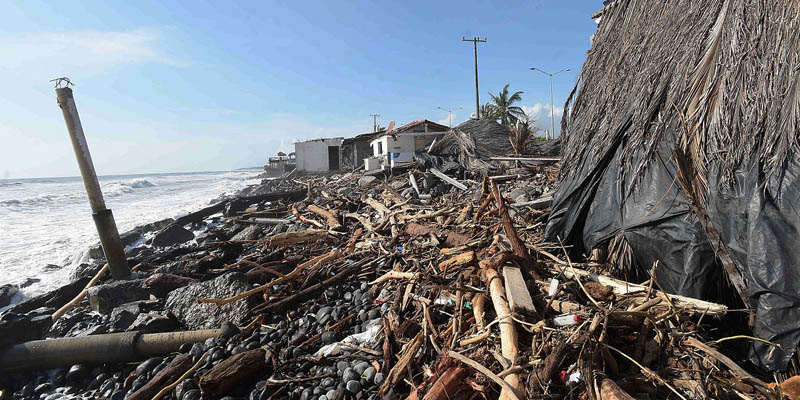We explore Hurricane Patricia, its duration, and the areas it affected. In addition, we discuss its main characteristics, the damage it caused, and more.

What was Hurricane Patricia?
Hurricane Patricia was a tropical cyclone originating in the Pacific Ocean, south of the Gulf of Tehuantepec, Mexico, in October 2015. It is considered the world’s most intense hurricane ever recorded, with winds reaching speeds of 202 miles per hour (325 km/h).
A well-observed feature of Hurricane Patricia was the exceptionally rapid speed with which it intensified. In just one hour, it escalated from a low-intensity tropical storm to a powerful Category 5 hurricane, the highest level on the Saffir-Simpson scale.
As is the case with all tropical cyclones, upon making landfall near Cuixmala, Mexico, Patricia rapidly lost intensity, passing from category 5 to 2 within a few hours. Its total duration was over 72 hours.
- See also: Tornado
Characteristics of Hurricane Patricia

The main characteristics of Hurricane Patricia include:
- Duration. Hurricane Patricia had a duration of four days, from its formation in the Pacific Ocean on October 20 to its last detection southwest of Monterrey on October 24, 2015.
- Affected areas. In its wake from Central America northward, Hurricane Patricia struck Guatemala and El Salvador. Upon reaching Mexico, it produced the most devastating effects in the states of Jalisco, Colima, Nayarit, and Michoacán.
- Intensity. On October 22 and 23, Hurricane Patricia underwent a rapid intensification process, becoming one of the most intense storms on record in the Pacific Ocean. Within just 24 hours, it escalated from a Category 1 storm to a Category 5 hurricane on the Saffir-Simpson scale. During this time, winds increased by more than 68 miles per hour (110 km), an unprecedented record in hurricane intensification.
- Meteorological effects. Like all hurricanes, Patricia was accompanied by heavy rainfall and sustained winds that reached 215 miles per hour (345 km/h) with gusts of nearly 250 miles per hour (400 km/h). The low pressure area created by the hurricane was one of the most intense in Western history, at 872 hPa. Patricia's cloud diameter was about 298 miles (480 km), covering most of the west coast of Mexico, parts of Guatemala, and El Salvador.
- Wave height. Upon reaching the Mexican coastline, Hurricane Patricia caused waves averaging about 39 feet (12 m) in height.
- Name change. After confirming the cyclone's intensity and the magnitude of the devastation caused, the Hurricane Committee of the World Meteorological Organization decided to remove the name "Patricia" from the list of hurricanes, replacing it with "Pamela" for the 2021 season. Consequently, in the future no hurricane will bear the name "Patricia".
Causes of Hurricane Patricia
The El Niño-Southern Oscillation (ENSO) is a natural climate phenomenon that occurs in the Pacific Ocean. It is a cyclic variation pattern in ocean temperature, atmospheric pressure, and wind patterns in the Pacific Ocean.
The Niño and La Niña phenomena are directly related to the temperature of the Pacific Ocean. During El Niño, surface temperatures in the Pacific become warmer than usual, which increases the likelihood of hurricane formation in the region. Conversely, during La Niña, temperatures become cooler than normal, reducing the chances of hurricane formation.
Warm water provides the energy that hurricanes need to intensify. The warmer the water, the more it evaporates, the more moisture is held in the atmosphere, and the more energy the hurricane gains. This is why hurricanes form mainly in the Caribbean and the Gulf of Mexico, where water is warmer. Moreover, if the water is even warmer due to El Niño, the conditions for an intense hurricane to form are greater.
In the case of Hurricane Patricia, it is believed that its rapid intensification might have been the result of unusually warm temperatures in the Pacific Ocean, coinciding with a rather intense El Niño phenomenon that year.
Effects of Hurricane Patricia

Due to the hurricane's imminent arrival, flights were canceled in the area, and nearly 30% of the tourists staying in Colima were evacuated. Activities were suspended, and public offices, businesses, and banks closed.
The states of Colima, Jalisco, and Nayarit experienced the most significant damages to city infrastructure and homes. According to Mexico's National Center for Prevention of Disasters (CENAPRED), Patricia caused property loss estimated at approximately US$460 million.
Other hurricanes in the Pacific Ocean
Although the Eastern Pacific area is characterized by the presence of hurricanes and tropical storms, none has had Hurricane Patricia’s intensity. Nevertheless, there have been some of similar intensity to hit the region:
- Hurricane Linda (1997). It did not directly impact Mexico, reaching maximum sustained winds of 183 miles per hour (295 km/h).
- Hurricane Kenna (2002). It made landfall near the city of San Blas, reaching maximum sustained winds of about 162 miles per hour (260 km/h).
- Hurricane Willa (2018). It made landfall near the city of Mazatlán, reaching maximum sustained winds of about 121 miles per hour (195 km/h).
References
- BBC News (2015). El huracán Patricia y las tormentas más intensas en la historia del océano Pacífico. BBC
- El Comercio (2015). Huracán Patricia toca tierra en el estado mexicano de Jalisco. ElComercio
- Organización Meteorológica Mundial (OMM) (s-f). Ciclones tropicales. WMO
Explore next:
Was this information useful to you?
Yes NoThank you for visiting us :)